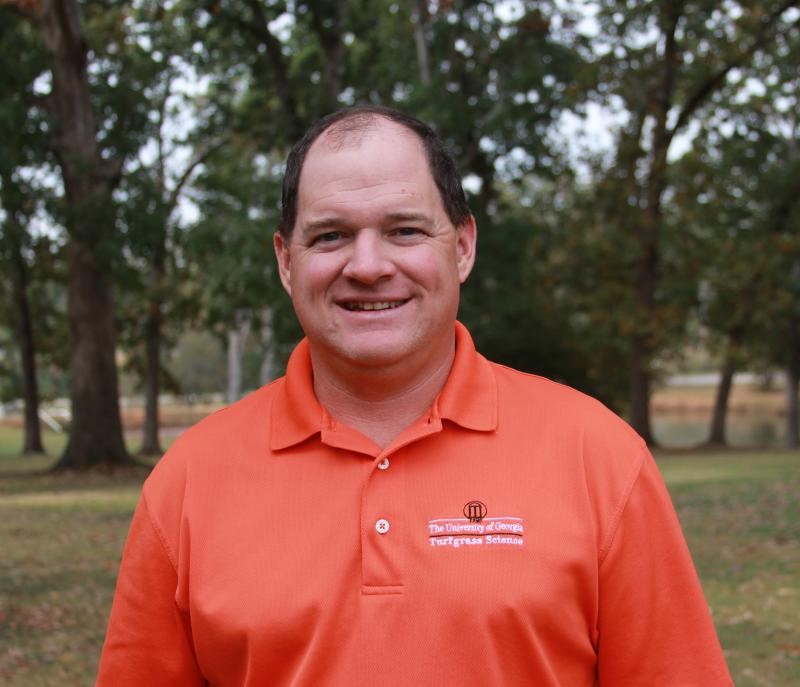Turfgrass Spring Blog #1: 2021 Edition: Zoysiagrass Green-up
(June 18, 2021)
By: Clint Waltz, Ph.D. - University of Georgia Turfgrass Specialist
As a University of Georgia Cooperative Extension turfgrass specialist, I have received numerous calls and emails over the past couple of weeks about zoysiagrass “green-up” issues. Interestingly this is the second consecutive spring / early summer that zoysiagrass has come to my attention. Over the past 20 years, spring zoysiagrass problems have sporadic or nonexistent.
This year zoysiagrass problems are falling into a few broad categories – disease, rot, and environmental. The disease issues primarily revolve around the fungus that causes large patch (Rhizoctonia solani). For information on identification and control of large patch, look for UGA Circular 1088 at www.GeorgiaTurf.com. Because mid- to late spring has been relatively dry, there has been minimal active large patch causing disease. Irrigated lawns can be the exception. Instead, most of the pictures and descriptions being reported this spring are from disease that occurred last fall. If the grass went into dormancy diseased, it does not recover during the winter and is “weak” as it begins to transition to active growth the following spring. The effect of fall large patches are still evident in the early spring and the presumption is the grass is struggling. Green-up can be slowed further with poor spring growing conditions – see below. If residual disease is the cause for concern, patience is encouraged. As environmental conditions become more conducive for zoysiagrass, it will typically recover from the previous year’s disease. To minimize this next year, a preventative fungicide program this September and October might be considered.
September 2020 was wet with about “normal” rainfall through the rest of the winter. As zoysiagrass was beginning to green-up, March 2021 was wetter than the previous two years. In areas with poor drainage and thatch, rotted roots, stolons, and rhizomes have been routinely observed. These areas have bare, wet soil with sporadic green zoysiagrass shoots. It is not universal, but the finer textured zoysiagrass cultivars seem to be more impacted by these conditions than the medium to coarse textured cultivars. To help the zoysiagrass recover this summer, rake-out the dead grass and core aerate to stimulate any surviving rhizomes to initiate new shoots. For long-term improvement, consider improving drainage around downspouts and leveling “bird baths” where water collects.
The last broad category is the impact of environmental conditions this spring. The “Easter freeze” followed by a cold snap the 3rd week of April, then a third in mid-May have zoysiagrass, and other warm-season grasses, stuck in first gear. To this point in the season, grasses have greened-up but have not began aggressive growth. As I have traveled around the state the past 3 weeks, turfgrass have had a “malnourished” appearance. This “look” can be attributed to the cool snaps keeping the 4-inch soil temperatures cooler than the past 3 years, especially for May. “Drought-ish” conditions may have also contributed to the light color and lack of growth. Environmental conditions can accentuate other problems, like recovery from carry-over large patch. Through mid-June, air and soil temperatures are getting into more favorable conditions for zoysiagrass growth. Additionally, rainfall has been more timely, promoting growth and improving color.
Going forward, maintain the basic agronomics for the growth of zoysiagrass. The mowing heigh range is 1.0 to 1.5 inches. Zoysiagrasses do not require a lot of nitrogen fertilizer, about 2.0 lbs N / 1000 ft2 / year – about 0.5 lb N / 1000 ft2 / month in May, June, July, and August. Irrigation should supplement rainfall and not exceed 1.0-inch / week when rainfall is limited.
You can reach Dr. Clint Waltz here: Dr. Clint Waltz
- Courtesy of the Urban Ag Council

